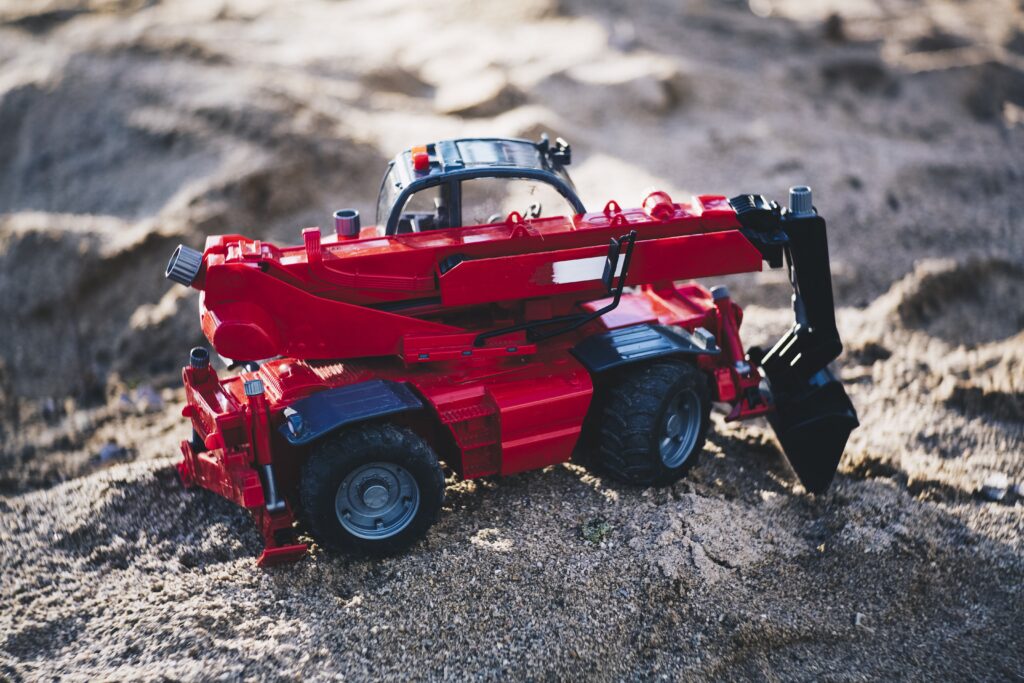During the winter months, it is important to ensure the proper care and protection of your tires when they are not in use. From extreme cold temperatures to moisture and potential damage from sitting in one position for an extended period, there are several factors that can impact the integrity of your tires. In this article, we will explore some essential tips and tricks on how to protect your tires during winter storage, so you can ensure they are ready for optimal performance when spring arrives. Whether you are storing them in a garage, shed, or other storage facility, these simple yet effective measures will help extend the lifespan of your tires and save you from unnecessary expenses down the road.
Choosing the Right Storage Location
Indoor Storage
When it comes to storing your tires during the winter season, finding an appropriate storage location is crucial. Indoor storage is highly recommended to protect your tires from the harsh elements of winter. By keeping your tires in a dry and temperature-controlled environment, you can prevent any potential damage caused by extreme cold, moisture, or sunlight exposure. Look for a storage area such as a garage, basement, or a dedicated storage unit that provides protection against these elements.
Climate-Controlled Storage
If you want to take the extra mile in ensuring the safety of your tires, consider opting for climate-controlled storage. These storage spaces maintain a consistent temperature and humidity level throughout the year, preventing any drastic changes that could harm your tires. Climate-controlled storage is particularly beneficial if you live in an area with severe winter conditions or if you plan on storing your tires for an extended period. It provides optimal conditions for preserving the integrity of your tires and prolonging their lifespan.
Elevated Storage
While indoor storage is ideal, it’s essential to take additional precautions to avoid potential damage to your tires. Storing your tires off the ground can prevent moisture absorption and potential flat spots. Consider using tire racks or sturdy shelves to elevate your tires and keep them safely stored. By doing so, you ensure proper air circulation around the tires and minimize the risk of moisture-related issues, such as corrosion or mold.
Avoiding Exposure to Sunlight
Sunlight exposure may not be an immediate concern during the winter months, but it can still affect the overall condition of your tires over time. If you choose to store your tires in an area with windows or skylights, make sure to cover them with curtains or blinds to block out any direct sunlight. Prolonged exposure to sunlight can cause the tire rubber to deteriorate, leading to cracks and reduced performance. By preventing sunlight exposure, you can maintain the quality and longevity of your tires.
Avoiding Exposure to Moisture
Moisture is one of the biggest enemies of stored tires, as it can lead to corrosion, mold, or mildew growth. When selecting a storage location, ensure that it is dry and free from any sources of moisture, such as leaks or high humidity levels. If your chosen storage space has a moisture issue, consider using moisture-absorbing products, like desiccant bags or silica gel packs, to create a dry environment for your tires. Additionally, inspect the area for any signs of water damage or leaks before storing your tires to avoid any potential harm.
Preparing Your Tires for Storage
Cleaning the Tires
Before storing your tires, it’s crucial to clean them thoroughly. Remove any dirt, debris, or brake dust from the tire surface to prevent the particles from causing damage or staining during storage. Use a gentle tire cleaner and a soft brush to scrub the tires, paying attention to the tread and sidewalls. After cleaning, rinse the tires with water and allow them to dry completely before proceeding with the next steps.
Inspecting and Fixing Any Damage
While cleaning your tires, take the opportunity to inspect them for any signs of damage or wear. Look for cracks, bulges, or punctures in the tire sidewalls or tread. If you notice any issues, it’s essential to address them before storing the tires to prevent further damage. Consult a professional tire technician if you’re unsure how to fix the damage properly. Making necessary repairs or replacing damaged tires ensures that you won’t encounter any surprises or safety concerns when reinstalling them after storage.
Adjusting the Tire Pressure
Properly inflated tires are vital for maintaining their shape and integrity during storage. Check the manufacturer’s recommended tire pressure and ensure each tire is inflated accordingly. Over time, tires may naturally lose air pressure, so it’s advisable to slightly overinflate them to compensate for this gradual loss. However, be cautious not to overinflate them too much, as it could lead to excessive pressure on the tire walls and cause damage. Find the right balance by following the manufacturer’s guidelines.
Applying Tire Dressing
To prevent tire drying and cracking during storage, it’s beneficial to apply a tire dressing or conditioner. These products nourish the rubber and provide essential oils and moisture to keep the tires supple. Choose a quality tire dressing specifically designed for long-term storage applications. Apply a thin layer to the sidewalls and gently rub it in with a cloth or sponge. Avoid getting the dressing on the tire treads or braking surfaces, as it could affect traction.
Wrapping the Tires
To provide an extra layer of protection against dust, moisture, and potential damage, consider wrapping each tire individually. Use tire storage bags or heavy-duty plastic wrap to cover the entire tire, ensuring that it is tightly sealed. This step helps prevent any exposure to external elements and maintains the cleanliness of the tires while in storage. Remember to label each wrapped tire to easily identify them when it’s time for reinstallation.

Storing Tires Properly
Using Tire Storage Bags
Investing in tire storage bags is a practical and convenient solution to keep your tires organized and protected. These specially designed bags are made of durable materials and feature strong handles for easy handling and transportation. By placing each wrapped tire in a separate bag, you can effectively shield them from dust, debris, and potential damage. The bags also help prevent any chemical reactions between the tires and other stored items.
Stacking Tires Correctly
If you have multiple sets of tires to store, it’s essential to stack them correctly to maximize space and ensure stability. Start by placing the heaviest and largest tires at the bottom as a solid base. Place the subsequent sets on top, making sure to align them evenly to distribute the weight evenly. Avoid stacking too high, as it could lead to the tires becoming unstable or potentially falling over. Consider adding a layer of cardboard or foam between each tire for further protection against scratches or rubbing.
Rotating Tires Periodically
To prevent flat spots from developing during extended storage, it’s advisable to rotate the tires periodically. Ideally, rotate them every few months to distribute the weight and pressure evenly. This practice helps to maintain tire shape and minimizes the risk of permanent flat spots. If possible, take the opportunity to inspect the tires during rotation for any changes in condition or potential issues.
Avoiding Heavy Objects on Top of Tires
When storing your tires, it’s crucial to avoid placing any heavy objects on top of them. Excessive weight or pressure can cause damage, deformation, or even tire sidewall bulges. Keep the area around the tires clear and ensure that there are no objects that could accidentally fall or be placed on top of them. By preventing unnecessary weight and pressure, you can preserve the integrity and performance of your tires.
Maintaining Proper Tire Pressure
Checking Tire Pressure Regularly
Even during storage, it’s important to check your tire pressure regularly. Changes in temperature or other factors can influence tire pressure over time. Use a reliable tire pressure gauge to measure each tire’s pressure and ensure they remain within the recommended range. If you notice any significant changes or pressure loss, reinflate the tires to the proper level.
Inflating or Deflating the Tires as Needed
Depending on your storage conditions and the duration of storage, you may need to adjust tire pressure accordingly. If you’re storing your tires in a heated indoor area, they may naturally lose pressure over time due to the warm air. In this case, periodically inflate the tires to maintain the desired pressure level. On the other hand, if you’re storing your tires in a very cold environment, consider slightly deflating them to alleviate the pressure caused by contraction in extreme temperatures. Remember to refer to the manufacturer’s recommendations for proper inflation procedures.
Avoiding Overinflating the Tires
While it’s essential to maintain the correct tire pressure, it’s equally important to avoid overinflating your tires during storage. Overinflated tires can result in excessive pressure on the sidewalls, which may lead to tire damage or premature wear. Follow the manufacturer’s guidelines for the proper inflation level, and ensure that you don’t exceed the maximum recommended tire pressure. Strike a balance between maintaining the appropriate pressure and not putting unnecessary stress on the tires.

Avoiding Tire Flat Spots
Using Tire Racks or Stands
To prevent the development of flat spots during prolonged storage, consider using tire racks or stands. These storage solutions elevate the tires and distribute their weight evenly, minimizing the pressure placed on a single area. Tire racks or stands help maintain the shape and contour of the tires, reducing the risk of flat spots forming. Ensure that the racks or stands you choose are sturdy, secure, and appropriately sized for your tires.
Using Tire Cushions or Carpet Squares
An alternative to tire racks or stands is the use of tire cushions or carpet squares. Place these soft and cushioned materials under each tire to provide a comfortable resting surface. The cushioning effect helps evenly distribute weight and reduce pressure points that can lead to flat spots. However, ensure that the chosen cushions or carpet squares are clean and free of any debris or moisture that could harm the tires.
Periodically Rolling the Tires
A simple yet effective way to prevent flat spots is to periodically roll the stored tires. By moving the tires slightly every few weeks, you can shift the weight distribution and minimize the chance of flat spots forming. Rotate each tire individually, ensuring that all areas of the tread come into contact with the ground. This practice not only helps maintain tire shape but also prevents any potential flat-spotting when the tires are not in use.
Protecting Tires from Dry Rot
Applying Tire Protectant
Dry rot is a common issue that can affect tires during storage, especially in areas with high heat or low humidity. To prevent dry rot, apply a tire protectant specifically designed to nourish and condition the rubber. These protective products typically contain UV inhibitors and moisturizing agents that help prolong tire life by preventing drying, cracking, and oxidation. Apply the tire protectant according to the manufacturer’s instructions, ensuring thorough coverage on the sidewalls and treads.
Avoiding Exposure to Ozone
Ozone, a gas produced by certain electrical equipment and motors, can accelerate the aging process of tires and contribute to dry rot. To minimize ozone exposure, avoid storing your tires near sources that produce ozone, such as electric motors, generators, or welding equipment. Additionally, choose a storage location that has proper ventilation to reduce the concentration of ozone in the air. By limiting ozone exposure, you can protect your tires from premature aging and deterioration.
Avoiding Prolonged Inactivity
Extended periods of inactivity can also contribute to dry rot. If you don’t plan on using your stored tires for an extended period, such as multiple seasons, it’s advisable to periodically take them out for a short drive. By driving on the tires, you flex the rubber and prevent them from becoming stagnant. If driving is not an option, spinning the tires while the vehicle is stationary can also help prevent dry rot. Keeping the tires active and regularly moving will minimize the risk of dry rot during prolonged storage.

Preventing Damage from Critters
Securing the Storage Area
Critters like rodents and pests are always seeking warm and cozy places to nest, and your tire storage area can be an attractive target for them. To prevent critters from causing damage, ensure that the storage area is properly sealed and secured. Inspect for any gaps, cracks, or openings that might allow them to access your tires. Use caulking or sealant to close off any potential entry points. Additionally, ensure that windows or doors are properly fitted and that there are no areas of loose ventilation that could provide an entry point for critters.
Using Mothballs or Rodent Repellents
To deter critters and rodents from nesting or causing damage to your stored tires, consider using mothballs or rodent repellents. Mothballs emit a strong odor that repels insects and mice, while rodent repellents typically contain natural substances that critters find unpleasant. Scatter these repellents around the storage area, ensuring that they are placed in areas where the critters are likely to enter. Remember to follow the manufacturer’s instructions and guidelines regarding the usage and placement of these repellents.
Regularly Inspecting Tires During Storage
Checking for Changes in Tire Condition
During the storage period, it’s crucial to regularly inspect your tires for any changes in their condition. Check for signs of cracking, bulges, or deformities in the tire sidewalls or treads. Look for discoloration, which can indicate potential chemical reactions or damage. Additionally, assess the overall condition of the tires to identify any issues that might have occurred during storage. Catching and addressing problems early on can prevent further damage and ensure the safety and performance of your tires.
Identifying and Addressing Any Issues
If you notice any changes or issues during the tire inspection, it’s important to address them promptly. Depending on the severity of the problem, you may need to consult a professional tire technician for a thorough assessment and necessary repairs. Ignoring or neglecting tire issues can lead to safety hazards or difficulties during reinstallment. By promptly identifying and addressing any issues, you can ensure that your tires are in optimal condition when it’s time to use them again.
Properly Reinstalling Tires
Cleaning the Tires Again
Before reinstalling your tires, it’s crucial to clean them once more to remove any accumulated dust, debris, or residue from storage. Use a gentle tire cleaner and a soft brush to scrub the tires and ensure that they are spotless. Rinse them with water and allow them to dry completely before proceeding with the reinstallation process. By starting with a clean surface, you minimize the risk of any contaminants affecting the tire performance or causing damage.
Inspecting for Damage Before Installation
After cleaning the tires, carefully inspect them for any signs of damage or wear that might have occurred during storage. Look for cracks, bulges, or punctures that might compromise the tire’s integrity or safety. If you identify any issues, consult with a professional tire technician to determine the appropriate course of action. Inspecting for damage before installation ensures that you are installing tires that are in excellent condition and free from any potential hazards.
Checking and Resetting Tire Pressure
Before putting your tires back on the vehicle, check the tire pressure again and ensure that it matches the manufacturer’s recommendations. Adjust the pressure as needed, inflating or deflating the tires accordingly. Properly inflated tires are essential for safe and comfortable driving, so take the time to reset the pressure to the appropriate level. This step ensures that your tires are prepared for optimal performance and longevity on the road.
Considering Professional Storage Options
Using Tire Storage Services
If you prefer to leave the tire storage responsibility to the professionals, consider utilizing tire storage services. These facilities specialize in storing and maintaining tires in optimal conditions, ensuring their safety and longevity. Tire storage services typically offer climate-controlled storage, regular inspections, and even tire rotation services. By entrusting your tires to a reputable storage service, you can have peace of mind knowing that your tires are well taken care of and ready for use whenever you need them.
Seeking Assistance from Mechanics or Tire Shops
If you don’t have access to suitable storage space or prefer a hands-on approach, you can seek assistance from mechanics or tire shops. These professionals have the necessary expertise and knowledge to guide you in properly storing your tires. They can provide recommendations on storage methods, products, and even assist with tire maintenance tasks like cleaning, inspecting, or rotating. Don’t hesitate to consult with professionals who can offer valuable advice and help ensure your tires are protected during storage.
In conclusion, protecting your tires during winter storage is essential to preserve their performance, longevity, and overall safety on the road. By choosing the right storage location, properly preparing the tires, and implementing appropriate storage practices, you can prevent damage, flat spots, dry rot, and critter infestations. Regular inspections and prompt addressing of any tire issues are crucial to ensuring the tires remain in optimal condition throughout the storage period. Whether you opt for DIY storage or professional services, taking the time and effort to protect your tires will pay off when the winter ends, and you’re ready for a smooth and safe ride.

